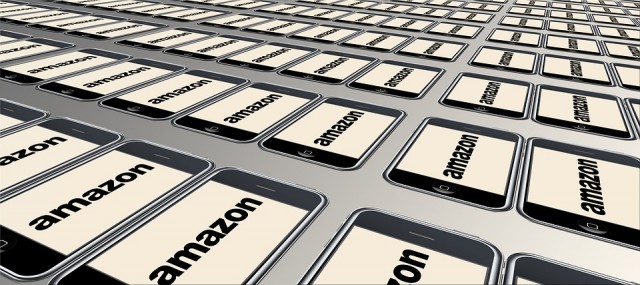I write a nerdy little blog about marketing in the public sector. Despite spending no money on promotion, my traffic continues to grow. One of my goals for this year is adding an Amazon affiliate bookstore to my site, hoping that would bring more traffic and maybe a little bit of money. Maybe you have the same goal.
It’s too soon to judge the money question, but I definitely learned how being an Amazon affiliate impacted my traffic.
Becoming an Amazon affiliate
Amazon makes it easy to become an affiliate. It’s in their best interest to make it easy, because affiliate sellers mean more people promoting their business and selling stuff for them.
My plan was to offer an convenient way for readers to purchase the books I review and reference on my blog. I’d have a Bookstore page on my site, plus links in the blog to books would incorporate my affiliate account and earn me a small commission, typical four percent.
I combed through the 240+ posts on my blog to build a list of books mentioned. Once I had my list of books, I used Amazon’s affiliate tools to create links to those books on Amazon that included my affiliate code. Next, I inserted my affiliate links at every mention of a book. When I was done, roughly 15% of my posts contained between one and four affiliate links. Using my list of books, I also created an Amazon bookstore page.
Things don’t always go according to plan.
The problem with affiliate links
My hope was that Google and other search engines would see links to Amazon as positive for search engine optimization (SEO). My research about affiliate links said that Google would at least not penalize a site for affiliate links as long as the site offered high-quality content. I think my site content is high quality, and I certainly wasn’t overloading the site with affiliate links, so I though all was good.
The moment I added affiliate links to my site, traffic plummeted. For 11 days, from Jan 28 through Feb 7, my traffic was cut in half or more. Check out my traffic graph:
Google either doesn’t like affiliate links, or doesn’t thinks my content is high quality.
I panicked. I’ve spent more than three years building up what traffic I have, only to watch it get whacked immediately because of one change.
The problem with free software
For my blog I use the “free” version of WordPress, WordPress.com. I put free in quotes because I still end up paying for stuff. However, it’s far less than the more powerful version, WordPress.org.
Being the free version, WordPress.com has some limitations. One limitation is that it doesn’t support frames. Without frame support, my Amazon bookstore can’t appear inside a page on my blog.
Like I said, things don’t always go according to plan.
Solving the problems of affiliate links and free software
I wasn’t ready to abandon being an Amazon affiliate just yet.
The bookstore solution, although not very satisfying, was relatively straightforward. In WordPress I made a menu item “Bookstore” and pointed it to the external link for my bookstore. Amazon lets you customize the colors and some of the text on your bookstore page, so at least the external page could match the rest of my site.
The affiliate links problem took a bit more research. I discovered that you can append a NOFOLLOW value to make Google and other search engines ignore a URL for SEO purposes. When you use it to link a book title, it looks like this:
<a href=”http://amzn.to/2kIFxTg” rel=”nofollow”>Book Title</a>
Once I added this value to all my affiliate links, plus the external link to my bookstore page, my traffic returned to normal. In the chart above, that’s the difference between Jan 28-Feb 7 and Feb 8-11.
Three lessons learned
I learned a few lessons during this exercise. That’s a big part of why I write a blog—to keep learning. (It certainly isn’t to make money, at least not yet.)
One lesson is perseverance. Keep pushing through the problems that crop up when you’re trying something new. Things rarely go right the first time, and that’s okay.
Another lesson is the value of internet content. Steps on how to be an Amazon affiliate, and how to solve any associated problems, are all easily located for free on the internet. It’s an amazing resource for people who want to keep learning. That’s part of why I write a blog—to give back to the internet community that gives so much.
The third lesson is a little fuzzy. I’d like to think my blog content is high quality. If so, that means that Google punishes high-quality content that contains affiliate links. But, maybe I’m being self-centered here. Google probably measures high-quality content, at least in part, by the traffic it draws. My traffic is still small potatoes in a world where viral YouTube videos can rack up a million views in a few hours. Until my content is generating those sorts of numbers, it’s good to know there are workarounds that let me continue learning and giving back with my nerdy little blog.
Find a Home-Based Business to Start-Up >>> Hundreds of Business Listings.


















































